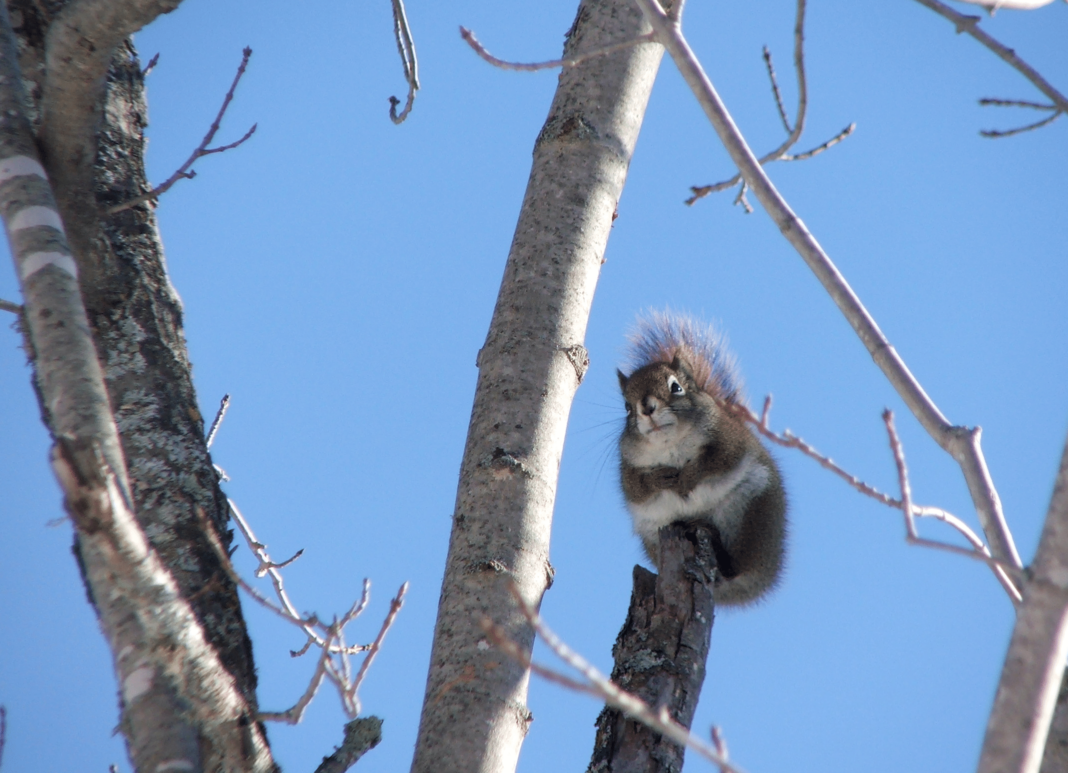On Thursday, Feb. 11, 2021, my boys and I completed our 100th walk in the Try To Walk Every Day Except Sunday (TTWEDES, or “Tweeds”) Challenge.
Since Oct. 19, 2020, we have walked one to two hours daily, with longer walks on Saturdays. We have walked most of the trails in Duluth, Jay Cooke State Park, Pattison State Park, and the Superior Municipal Forest. We walked 64 miles of the Superior Hiking Trail—from the Minnesota/Wisconsin border to Normanna Road—and many ice-covered bays and rivers. We spent a few days bushwhacking through the woods on no trails at all, and one day walking the river bluffs in La Crosse, Wisconsin.
In our first 100 walks, we covered 304.4 miles. We have not been stopped by rain, snow, or cold—only illness has momentarily sidelined a walker or two. I have informed the kids that weather is not a factor in determining whether we walk or not, a condition which they seem to have accepted.


The landscape of the Duluth/Superior metropolitan area is ideal for a project like this. Within city limits, Duluth has 10,000 acres of public greenspace, and Superior boasts the third-largest municipal forest in the nation, at 4,400 acres. Beyond their city limits, forest sprawls out in every direction. The lack of snow in the region throughout November and December allowed us to walk on ski and snowmobile trails without user conflict; the recent deep freeze helped by converting the trails into natural winter sidewalks.
These walks present participants with a series of small difficulties to overcome—a sock slides off and bunches up in a boot, a zipper clogged with ice declines to zip, you spill the last of your water when you need it the most—which I advise the kids is good for building character. I carry ibuprofen (which I dole out as needed), gummy candy (which I dispense when a morale boost is needed), and a first aid kit. I have toilet paper and dry socks stored in Ziploc bags in the bottom of my pack, scissors and pliers in a side pocket, and a sheaf of birch bark and a lighter in the other side. For chapped lips, I have Chapstick; for blisters, I have duct tape. My most common medical advice is, “Walk it off.”
We haven’t had any momentous wildlife sightings in the first hundred walks—no bears or wolves, no pine marten or lynx. We’ve seen plenty of deer, of course, which we sometimes mistook for mountain bikers beelining through the woods. We’ve seen plenty of squirrels and ravens, a few rabbits, and a couple of moles. A pileated woodpecker hammering on a tree, like a supersized woodpecker action figure, made an impression. Bald eagles soaring overhead, a fairly common sight, somehow remained worthy of comment each time.
In Jay Cooke Park, we saw ample evidence of turkeys. We found their cartoonish stick-arrow tracks in the mud and snow of the trail, and on ridges where they had scuffled up great swaths of oak leaves from under the snow, presumably in search of acorns. We never saw them in person. In the summer, we often see turkeys on the roadsides in Jay Cooke, but they remained elusive in the woods.

Beavers are everywhere, though we have not seen them, either. We have seen dozens of beaver lodges, hundreds of gnawed trees, and dams of all sizes. On county land north of Prindle Road in Lakewood Township, we came across an enormous dam that had been breached and the pond drained. It was easily two hundred feet long and as wide as a road. Judging by all the standing dead trees, the pond had once been many acres in size. In the middle of the drained area, the abandoned beaver lodge was a massive dome—twenty-five feet in diameter at the base and a good ten or twelve feet tall. This was the first time we had ever seen one from top to bottom. We located the entrance near the base, which I encouraged the kids to crawl into, but none of them had any inclination to do so. They noticed another dam and lodge downstream, and speculated that the beavers had moved there when they lost their original home.


In the Superior Municipal Forest, we noticed a group of chickadees picking bits of meat off a dead deer. A little research on the National Wildlife Federation’s website revealed that chickadees “eat a diet of seeds, berries, insects, invertebrates, and occasionally small portions of carrion.” Another surprise.
Like the omnivorous black-caps, we scavenge from the land. My pack is an expandable multi-compartment Eastsport that I pulled from the mud along Keene Creek and cleaned up nicely. It retails for $34.99. I wear an Under Armour fleece jacket that I found on a deer trail near Proctor, worth at least $80 new. My hat is a navy blue knit manufactured by Capamerica ($12) that I found on the Duluth Traverse near Mission Creek. In my pocket, I carry a solid little pocketknife, a Maple Burl Fat Boy ($25.95), manufactured by Sarge. “The beautiful maple burl wood handle lends great character to this small yet mighty knife,” reads the ad copy on the company’s website. I found it on the Grand Portage Trail in Jay Cooke. As I tell the boys, it’s like getting paid to walk.

In one notable instance, I wrote down “2 utility buckets” on a shopping list at home, and the next day we found two utility buckets in the woods near Morgan Park. I carried them out to the road, stashed them in the ditch, and came back later in my vehicle to pick them up. The buckets sell for $2.99 apiece at Menards.
When we stop at a convenience store after our walks, the ten-year-old hunts for pocket change under the counter while I pay for their drinks. As we drive off, he reports how much money he has found. They learn so fast.
When it comes to frozen rivers and streams, there are only a few good ones to walk on, almost all in Wisconsin. Streams in Duluth tend to be narrow, swift-running, and choked with brush and deadfalls, making walking on them nearly impossible. One exception is Amity Creek, which offers a pleasant, mostly unimpeded stroll for a mile or more, below Skyline Parkway.

The Wisconsin side of the St. Louis River estuary is a maze of long, finger-like bays and peninsulas. When the big river freezes, one can spend hours wandering among them. On Jan. 23, we struck out across the frozen estuary from Gary and wound up in Little Pokegama Bay. At the end of the bay, we found the Little Pokegama River snaking through the wetlands, a frozen brown ribbon ten or fifteen feet wide. It was the poster child of frozen rivers: smooth, snowless, completely brush-free. Fortified with gummies, we passed through the wild country like nonchalant boulevardiers.

As the river entered the forest, we came to a tree across the river, which we crawled under or over, according to our size. Then we came to another tree, then to a pile of trees. The local beavers had been hard at work leveling the forest. On both banks, we saw trees in all stages of gnawing, surrounded by piles of wood chips. Some teetered on a toothpick, ready to topple in the next wind. Clambering through the obstacle course, we soon came to a small dam, followed by a much larger dam and a lodge: Beaver headquarters. The fifteen-year-old broke through the ice and got a wet leg, so we moved to solid ground. Beaver trails were everywhere in the snow. The ten-year-old found a few strands of beaver fur and kept them. The eleven-year-old spied an old, bleached-out deer skull, so we kept that, too. Eventually we came to Highway 105, where we were picked up by my wife, who was a little less excited about our finds than we were.


Sitting in the car, the kids were chatterboxes. They didn’t talk about the walk, but about other things—video games or whatever kids talk about. I didn’t pay much attention. The kids were always like this at the end of a walk—lively and alert, like wild creatures. They don’t love walking (though they never complain), but the benefit is clear to me.
As a writer, I am sorry to report that taking 100 walks has not provided me with any deep insights about life. Another 100 may be required.

_________________________________________
Featured image: Skeptical squirrel on the Valley West Trail, Mission Creek. Credit: John Ramos






Fantastic article, thank you. Based on your anecdotal evidence, I have contacted the NWF and recommended they update their chickadee diet description as follows:
“chickadees ‘eat a diet of seeds, berries, insects, invertebrates, and occasionally [deer].'”